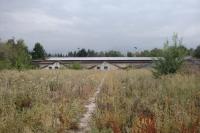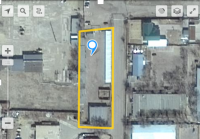Livin' in Kazakhstan: the complete guide If you want to move to Kazakhstan, you need to know that there are advantages and disadvantages, which you need to know, to fully understand how and to what extent this change can be accepted. With our small but essential guide, you can easily draw conc ...
Kazakhstan
View listingskazakhstan.realigro.com is the first worldwide real estate search engine where you can look up listings of homes for sale in Kazakhstan
Property for sale in Kazakhstan
Kazakhstan is a Central Asian country and a former Soviet republic, extending from the Caspian Sea, to the west, up to the Altai Mountains to the east, on the border with China and Russia. Almaty is its largest metropolis and it is an ancient commercial hub, its best-known sites are the Ascension Cathedral, an Orthodox church dating back to Tsarist Russia, and the Central State Museum of Kazakhstan.
Kazakhstan borders east with China, west and north with Russia and south with some central Asian countries, namely Kyrgyzstan, Uzbekistan and Turkmenistan. Moreover, to the west it is bounded for a stretch by the shores of the Caspian Sea.
Astana has been the capital since 1997. It has a rapidly increasing population and in 2017 it hosted the Universal Exposition.
Changes in prices of property for sale in Kazakhstan depend on the economic factors of the demand. When considering the trends of these factors, prices of property for sale in Kazakhstan will not show any particular changes in 2018. In Almaty, prices will remain at the same level or show a slight increase due to buyers who have previously delayed their decision to buy properties.
The number of transactions in Kazakhstan for the period from January to November 2017 increased by 28.6% compared to the same period of 2016.
In 2018, demand will remain at a high level, but it is much more important for this question to be solvent. Only if the demand is solvent will there be further positive movements. The Kazakh real estate market demonstrates stability this year with a slight increase in prices for the purchase of property for sale in Kazakhstan and no change in rent.
In Kazakhstan, the number of transactions for the purchase and transaction of property for sale in the period January-April 2018 increased by 4% compared to the same period of 2017.
Previously, Kazakhstan experienced a sharp decline in the real estate market due to adverse external conditions. The devaluation of the national currency, together with a decrease in real wages and purchasing power, has affected the demand side, while a slight over-investment and a high exposure to currency risks have shocked the offer.
-
Livin' in Kazakhstan: the complete guide
 Map, price trends, and statistics
Map, price trends, and statistics
Real Estate Listings
For sale 1 Bedroom, Kazakhstan, Almaty, Almaty, Проспект Назарбаева 42/44

For sale
1 Bedroom
63 m²
For sale 2 Bedrooms, Kazakhstan, Almaty, Almaty, Zhas-Kanat

For sale
2 Bedrooms
68 m²
For sale Other (Land), Kazakhstan, Almaty, Almaty, Таугуль 3

For sale
Other (Land)
16800 m²
For sale 5+ Bedrooms, Kazakhstan, Almaty, Almaty, Ботанический сад 17

For sale
5+ Bedrooms
254 m²
For sale House, Kazakhstan, Almaty, Almaty, Medeu district, Zamartas street

For sale
House
480 m²
For sale 1 Bedroom, Kazakhstan, Almaty, Almaty, Taugul-1, 44

For sale
1 Bedroom
41 m²
For sale 1 Bedroom, Kazakhstan, Astana, Astana, Amman 4

For sale
1 Bedroom
83 m²
For sale Other (Land), Kazakhstan, Akmola, Ermentau, Ermentau

For sale
Other (Land)
40 m²
For sale Development Property, Kazakhstan, North Kazakhstan, Choya, Centrall st 22

For sale
Development Property
5200 m²
For sale Business, Kazakhstan, Baikonur, Baikonur, gvardeyskaya street 29

For sale
Business
8364 m²
 Map, price trends, and statistics
Map, price trends, and statistics
